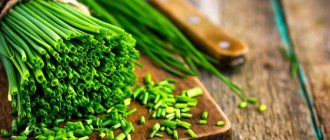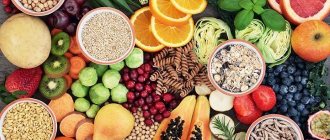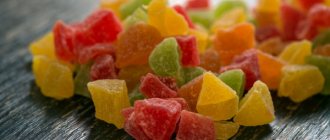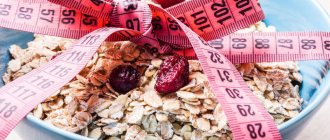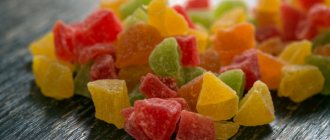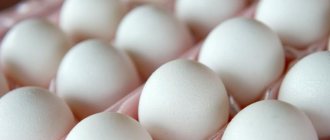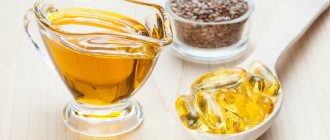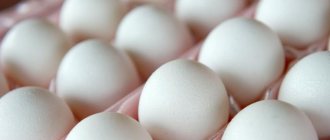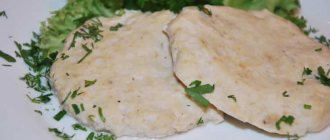How much does one orange weigh without peel?
Nutritional value and chemical composition of "orange without peel".
The energy value of an orange without peel is 37 kcal.
Primary Source: Created in the application by the user. Read more.
** This table shows the average levels of vitamins and minerals for an adult. If you want to know the norms taking into account your gender, age and other factors, then use the “My Healthy Diet” application.
It's hard to imagine that orange was once considered a delicacy for the royal nobility. Today, this sunny fruit is the most famous member of the citrus family on earth. Tens of millions of people consider it the most healthy, tasty and aromatic, and are widely used in cooking and home cosmetology. Use for preparing sweet dishes, roasting meat and poultry requires knowledge of the weight of the product. Let's figure out how much an orange weighs in the peel, without the peel, and what beneficial properties this product has.
Oranges as a way to lose weight
For many people on the planet, orange is associated with the sun. Its color and aroma can lift your spirits in any life situation and more. Nutritionists assure that a comprehensive method of losing weight using this sunny fruit will help even the most obese people lose extra pounds.
Orange essential oils are used for massage and wrapping procedures. After all, if you combine these procedures and proper nutrition, you can remove all excess fluid from the body. And the orange smell will put you in a great mood. This weight loss method can be easily used at home.
Wrap recipes:
- Mix 2 tbsp in a container. spoons of olive oil, 3 drops of orange oil, 3 drops of juniper oil and 3 drops of cypress oil. Coat problem areas with the mixture and then wrap them in cling film. After 20 minutes, wash off the mixture with warm water and soap.
- A highly effective remedy for losing excess weight is a mixture prepared from 5 drops of orange oil, 1 drop of rose oil, 2 drops of lavender oil and 1 tbsp. spoons of sesame oil. The method of using the mixture is exactly the same as in the first case.
- For the third recipe you need to prepare 2 tbsp. spoons of cream with a fat content of at least 20%, 10 drops of orange essential oil and 100 gr. blue clay. Mix all ingredients and add warm water until the consistency resembles thick sour cream. Apply the mixture to regular bandages and wrap them around problem areas of the body, wrap with film on top. After 30 minutes, rinse with water.
Attention! Such procedures should absolutely not be carried out if the skin is damaged, or if any allergic reactions occur.
Many nutritionists agree that a vanilla candle burned before a meal and the aroma of any citrus fruit can reduce appetite.
Composition and beneficial properties
One orange is eighty percent water. There is a minimal amount of protein and fat, and more than 8% carbohydrates. They are represented by glucose and fructose and are quickly absorbed in the body, replenishing energy reserves. Vitamins, folic and ascorbic acid, microelements have a beneficial effect, protect against diseases, and normalize the functioning of organs and systems.
Oranges have a lot of useful qualities:
- have an antiviral effect, strengthen the immune system;
- stimulate bile production;
- normalize the functioning of the gastrointestinal tract, relieve constipation;
- accelerate the metabolic process, tone up, reduce fatigue;
- slow down the aging process, lighten the skin, get rid of age spots;
- reduce temperature in viral diseases, speed up the recovery process;
- eliminate inflammation in the oral cavity.
The low calorie content of the product allows it to be used during weight loss; the high fiber content has a beneficial effect on intestinal function. The content of macro- and microelements keeps skin, hair and nails in perfect condition.
Flaws
The health benefits of oranges have been proven for a long time, but, like any product, it has its drawbacks:
- with excessive consumption, signs of hypervitaminosis may appear;
- people with diabetes should be careful about this fruit, as it contains a large amount of carbohydrates;
- orange juice increases the acidity of the stomach, therefore it is contraindicated for ulcers and chronic gastritis;
- consumption of citrus fruits can cause urticaria, Quincke's edema, and dermatitis;
- Particular attention should be paid to the consumption of oranges during pregnancy and while feeding the baby.
Citrus zest
The zest contains a large amount of vitamins and microelements. It has a beneficial effect on the immune and cardiovascular systems, accelerates metabolism, rejuvenates, and helps remove excess fluid from the body. Strengthens bone and cartilaginous tissue, preventing the development of age-related osteoporosis. Promotes the transmission of nerve impulses to the cerebral cortex, relieves fatigue after a hard day, increases concentration, and prevents depression.
As for “clothing,” it makes up about a quarter. If the weight of an average orange is 240 - 300 grams, then the figures when weighing the peel will be 60 - 70 grams. The aromatic peel has a bitter taste, with spicy notes and slight sweetness, and contains a large amount of essential oils. It is used in cooking, in the production of liquor and vodka products, and added to meat dishes.
It is noteworthy that the top layer is not capable of accumulating harmful substances, nitrates, nitrites, therefore it can be safely used in dried form as a culinary additive.
What does orange tree fruit look like?
Depending on the variety, the fruits can be round, oval, oval-elongated, pear-shaped, tapering towards the base .
According to the thickness of the skin - thick-skinned and thin-skinned, and according to the nature of the outer layer - with a smooth or porous surface.
The peel contains a large amount of essential oils , with a strong aroma and bitter taste. The bright outer layer, called flavedo (yellow), contains many essential oil glands containing aromatic oil.
The inner layer - albedo (white) has a loose consistency and is easily separated from the pulp. The peel is quite massive and makes up from 17 to 42% of the total weight of the fruit.
The fruits have a rather complex structure: their pulp has several sections (from 9 to 13), separated by translucent films. Inside each section there are many spindle-shaped sap sacs. Depending on the variety, there is pulp of varying juiciness (juicy, medium, dry), color (from yellow to dark red), taste (sour, sweet-sour, sweet). Small white seeds are immersed in the pulp and located one above the other.
Orange is a remontant crop: it blooms and forms ovaries several times during the growing season. Thus, on one tree, at the same time, there can be flowers, ovaries, and fruits. Ripe fruits remain on the tree for a long time, gradually losing their taste.
The fruits are rich in ascorbic acid (50-65 mg per 100 g), thiamine, vitamin P and B8 (inasitol). They also contain pectin substances, calcium, potassium, phosphorus, and valuable orange oil.
Unique fruits
Biggest
On average, 1 piece weighs about 150 - 250 grams, but there are fruits that reach enormous sizes. In size they resemble a medium grapefruit or a small pomelo. It is impossible to find such fruits in supermarkets, but it is reliably known that the world’s largest sweet fruit was grown in Abkhazia, and its weight reached 850 grams. Even for Sukhumi this turned out to be an unprecedented curiosity, since such sizes are sensational for the Washington variety.
The smallest
All fruits differ in shape and size, but there are also “super small” ones. This is a member of the citrus family - kumquat. The ancient Chinese called this plant the golden orange; its fruits reach no more than five centimeters in length and four centimeters in diameter. The weight of this baby is about 50 grams, it is eaten together with the peel, and it is this peel that indicates its maturity when choosing a product.
How many calories are in an orange. How useful is it?
Orange belongs to the group of low-calorie foods. After all, for one fruit, weighing 100 grams. accounts for approximately 36 – 43 kcal. This advantage of citrus fruit allows you to consume a delicious delicacy and at the same time lose weight. However, the most important advantage of the fruit is its high vitamin C content.
This vitamin removes free radicals from the human body, which contribute to the growth of cells that contribute to the development of cancer.
In addition, as a result of regular consumption of sunny citrus fruits, the human body rejuvenates, this happens due to antioxidants, which are found in large quantities in the fruits. Eating just one fruit per day will provide you with your daily requirement of vitamin C.
Even though the calorie content of 1 pc. orange is very small, it contains a huge number of different microelements:
In their combination, trace elements and active substances have a beneficial effect on many vital systems of the human body. Another positive quality of this beautiful bright fruit is the rapid healing of wounds and abrasions. Ancient healers came to this discovery.
Calorie content of orange per 100 grams
Orange, like other citrus fruits, is consumed not only fresh. Candied fruits and jams are prepared from the fruit, fresh juice is squeezed out, and essential oil is made from the peel, which is used to make carbonated and alcoholic drinks. Therefore, it is impossible to clearly judge the calorie content of an orange. We invite you to learn about the energy value of popular products.
Without peel
The energy value of citrus fruits is low. The energy value of the fruit pulp is 43 kilocalories per 100 g. The calorie content in 1 piece is determined by the weight of the fruit. Considering that the weight of an average orange without peel is 150 grams (and its diameter is 8 centimeters), we can conclude that:
• Calorie content of 1 orange without peel – 65 kcal.
With peel
The zest has a relatively low caloric content of 16 kilocalories per 100 g. The orange skin contains a base that is used to make essential oil. It contains sodium, fat, ascorbic acid, potassium, which is beneficial for the circulatory system, and other substances. Orange zest is used to eliminate swelling; it normalizes the water-salt balance of the body. The tincture of the peel is useful for women, as it facilitates menstruation, reducing pain. It is the orange zest that contains substances that effectively fight cholesterol. Therefore, there is no need to throw it away. As well as eating in unlimited quantities: in this case, allergic reactions may occur.
• The energy value of an orange with peel is 57 kcal per 100 grams.
In dried (candied fruits)
Candied orange peels are the peels of the fruit, boiled in concentrated sugar syrup, and then dried in a candied form. This is a fragrant, tasty and healthy delicacy. Candied fruits are consumed directly and added to all kinds of desserts and baked goods. In addition, they are often used to decorate ready-made dishes.
Candied orange peels prepared with your own hands have the greatest benefits. We'll tell you how to do this. Take orange peels with pulp, soak in water for 3-4 days until the bitterness is removed. The fluid must be changed approximately 5-7 times to prevent souring. Then the soaked peel is boiled 3-5 times in concentrated sugar syrup. After each cooking, the product must infuse. At the end, the candied fruits must be dried thoroughly.
• Calorie content of 100 g of dried product – 301 kilocalories.
In orange juice
Using a juicer or even squeezing a few fruits by hand, you can get natural orange juice. Due to its low calorie content, freshly squeezed juice can be included in the daily diet of people who are struggling with excess weight.
At the same time it is useful. Natural orange juice contains a large amount of vitamin C: 300 milliliters of the drink will satisfy the daily need for it. It is also used for flu, colds and sore throats as an antipyretic and anti-inflammatory agent. Orange should also be consumed by people suffering from hypertension, diseases of the joints, skin and respiratory organs. Due to the high content of nutrients, natural orange juice effectively fights vitamin deficiency, as well as anemia and other diseases of the circulatory system.
How many calories does one fruit contain?
The calorie content of a fruit depends on its weight and thickness of the peel. Orange – calorie content 1 pc. is 36-43 kcal. Despite the fact that the peel of the fruit has greater nutritional value and an interesting taste with a spicy note, it is practically not eaten.
As a rule, the weight of one medium-sized orange is 100-120 grams. The peel of such fruits is quite thin, so after peeling the citrus fruit will weigh at least 80 grams. Based on the above information, the average calorie content of a fruit will not exceed 40 kcal.
But the largest oranges can reach a weight of 270 grams, so their energy value can be about 100 kcal in one copy.
Energy value of fruit
The fruit is perfect for a diet of 2,000 kcal per day, since the balance of proteins, fats and carbohydrates indicates that the amount of the latter is 3% of the daily value. One medium orange contains 0.2 grams. fat, 8.1 gr. carbohydrates and 0.9 g. proteins. Thanks to this, the calorie content of 1 piece. orange is very small.
The carbohydrates contained in oranges are representatives of glucose and fructose, due to which, when consumed, there is a powerful release of energy into the blood. This is why most people know the fruit as an excellent tonic.
In fact, the fruit is a real storehouse of vitamins. Their composition is huge, and what else is needed to maintain the health of the human body and increase vitality.
Composition and nutritional value of the fruit
The advantage of this citrus fruit is its high content of vitamin C and ascorbic acid. 1 small orange (weighing 150 grams) contains over 80 milligrams. And this is the daily requirement of the human body for vitamin C! Orange contains vitamins B, A, PP and an impressive amount of microelements (magnesium, calcium, potassium, iron, phosphorus and sodium). The fruits contain organic acids that break down fats, valuable dietary fiber, improve digestion processes and remove toxins from the body.
Orange is more than 80% water. The ratio of BZHU (proteins, fats and carbohydrates) is typical for citrus fruits: the capacity of one component is high. 100 grams of fruit have a minimum content of fat (0.2% of the total mass) and protein (0.9%). There are more carbohydrates in orange: 8.1%. They contain most of the calories. The carbohydrates contained in oranges are mono- and disaccharides (primarily fructose and glucose). They are instantly absorbed into the blood, releasing energy reserves. For this reason, orange has an invigorating and refreshing effect.
How much does an orange weigh?
It's hard to imagine that orange was once considered a delicacy for the royal nobility. Today, this sunny fruit is the most famous member of the citrus family on earth. Tens of millions of people consider it the most healthy, tasty and aromatic, and are widely used in cooking and home cosmetology. Use for preparing sweet dishes, roasting meat and poultry requires knowledge of the weight of the product. Let's figure out how much an orange weighs in the peel, without the peel, and what beneficial properties this product has.
Rules for choosing an orange
In conclusion, it is worth highlighting the secrets of choosing a representative of the citrus family. If you don’t know the main rules, there is a high risk of choosing a tasteless and dry product. To avoid this, it is worth knowing that there are four types of fruit:
- Ordinary. The peculiarity of this orange is its yellow pulp and many seeds inside.
- Umbilical. In this case, the color of the pulp is orange. The main difference is the presence of a second embryonic fetus.
- Jaffa. Such fruits differ from their “brothers” in their thick skin with “pimples” and large size.
- Kinglet. This species is easy to recognize by its taste (it is sweet), small size and bright red flesh.
Jaffa and navel oranges are considered the most delicious. The easiest way to recognize a quality fruit is to hold it in your hand, because juiciness and taste are directly dependent on the weight of the fruit. In addition, a tasty product is recognized by its bright aroma, which cannot be confused with anything else. It wouldn’t hurt to ask when the fruit was harvested. If in November-December, then it will last a long time.
Composition and beneficial properties
One orange is eighty percent water. There is a minimal amount of protein and fat, and more than 8% carbohydrates. They are represented by glucose and fructose and are quickly absorbed in the body, replenishing energy reserves. Vitamins, folic and ascorbic acid, microelements have a beneficial effect, protect against diseases, and normalize the functioning of organs and systems.
Oranges have a lot of useful qualities:
- have an antiviral effect, strengthen the immune system;
- stimulate bile production;
- normalize the functioning of the gastrointestinal tract, relieve constipation;
- accelerate the metabolic process, tone up, reduce fatigue;
- slow down the aging process, lighten the skin, get rid of age spots;
- reduce temperature in viral diseases, speed up the recovery process;
- eliminate inflammation in the oral cavity.
The low calorie content of the product allows it to be used during weight loss; the high fiber content has a beneficial effect on intestinal function. The content of macro- and microelements keeps skin, hair and nails in perfect condition.
Flaws
The health benefits of oranges have been proven for a long time, but, like any product, it has its drawbacks:
- with excessive consumption, signs of hypervitaminosis may appear;
- people with diabetes should be careful about this fruit, as it contains a large amount of carbohydrates;
- orange juice increases the acidity of the stomach, therefore it is contraindicated for ulcers and chronic gastritis;
- consumption of citrus fruits can cause urticaria, Quincke's edema, and dermatitis;
- Particular attention should be paid to the consumption of oranges during pregnancy and while feeding the baby.
Calorie content of the product
An important piece of information to know about oranges is their calorie content. This parameter changes depending on the form in which the product is presented - with or without peel, in the form of juice or candied fruit. Indeed, a representative of citrus fruits is eaten not only in its natural form. It is often found in the following products:
- fresh juices;
- jams;
- essential oil;
- alcoholic and carbonated drinks.
This is why the number of calories in an orange must be considered individually for each option:
- No peel. Scientists have proven that the energy value of the fruit is low. The pulp of a representative of the citrus family contains only 43 kcal per 100 grams. Otherwise, the calorie content varies based on weight. If we consider that the mass of the fruit is 150 grams , then the calorie content of one orange without peel is approximately 63-65 kcal.
- With peel. Scientists have proven that the zest of the fruit also contains a certain proportion of useful substances. At the same time, its calorie content is 16 kcal/100 grams. The peel is often used to prepare essential oils (which will be discussed below). The zest also contains vitamin C, fats, sodium, potassium and other substances beneficial to the body. The peel is used to solve the following problems:
- rapid elimination of swelling;
facilitating the menstrual cycle;
- improving the functioning of the circulatory system;
- normalization of cholesterol levels in the blood.
The peel is also used in everyday life:
- in the form of a useful “toy” for your favorite animal;
- as a sedative;
- to light a fire and fill the room with pleasant smells;
- in order to get rid of various insects (the aroma of the crusts helps in this matter).
The calorie content of an orange without peel is lower, which is logical. At the same time, you should not throw away the zest. According to nutritionists, it has a beneficial effect on the functioning of the body. But you should be careful, because excessive intake of the product leads to allergic reactions. The total energy value of an average orange with zest is 79-81 kcal.
- protects against bleeding;
eliminates gum inflammation;
Essential oil is also used for cosmetic purposes. It gives a wonderful smell, strengthens hair, softens the skin. Masks that give the skin elasticity and moisturize it are widely used. And if the calorie content of 1 orange without peel is high, then you should not be afraid of it (due to use in minimal quantities)
The energy value of orange essential oil is 890 kcal/100 grams.
Citrus zest
The zest contains a large amount of vitamins and microelements. It has a beneficial effect on the immune and cardiovascular systems, accelerates metabolism, rejuvenates, and helps remove excess fluid from the body. Strengthens bone and cartilaginous tissue, preventing the development of age-related osteoporosis. Promotes the transmission of nerve impulses to the cerebral cortex, relieves fatigue after a hard day, increases concentration, and prevents depression.
As for “clothing,” it makes up about a quarter. If the weight of an average orange is 240 - 300 grams, then the figures when weighing the peel will be 60 - 70 grams. The aromatic peel has a bitter taste, with spicy notes and slight sweetness, and contains a large amount of essential oils. It is used in cooking, in the production of liquor and vodka products, and added to meat dishes.
It is noteworthy that the top layer is not capable of accumulating harmful substances, nitrates, nitrites, therefore it can be safely used in dried form as a culinary additive.
Unique fruits
Biggest
On average, 1 piece weighs about 150 - 250 grams, but there are fruits that reach enormous sizes. In size they resemble a medium grapefruit or a small pomelo. It is impossible to find such fruits in supermarkets, but it is reliably known that the world’s largest sweet fruit was grown in Abkhazia, and its weight reached 850 grams. Even for Sukhumi this turned out to be an unprecedented curiosity, since such sizes are sensational for the Washington variety.
The smallest
All fruits differ in shape and size, but there are also “super small” ones. This is a member of the citrus family - kumquat. The ancient Chinese called this plant the golden orange; its fruits reach no more than five centimeters in length and four centimeters in diameter. The weight of this baby is about 50 grams, it is eaten together with the peel, and it is this peel that indicates its maturity when choosing a product.
Kumquats can be stored in the freezer for later use in preparing drinks, snacks, a variety of salads and cocktail garnishes.
For a long time, oranges were used as food in their natural form. But modern cooking has discovered the extraordinary properties and taste of both the pulp itself and the zest. Now the most common fruit of the citrus family, it occupies a well-deserved place in home and professional kitchens.
See the following video for the characteristics and properties of orange.
How much does an average orange weigh?
A medium orange weighs 214 grams
A bright juicy orange is a favorite fruit for many. This sunny citrus beauty is known to be rich in vitamin C. And one such fruit weighs, as can be seen in the photo, 214 grams. Please note that oranges grow in different sizes, and yours may vary in weight up or down.
We will also show you
One of the most popular queries on the Internet is “How much does it weigh?”
People are constantly looking for what and how much it weighs, since not everyone has scales at home. Sometimes it’s just interest, and sometimes it’s for nutrition (diet), when you need to calculate the calories of a particular product.
Our website skolko-vesit.com helps people find the weight of certain things and products that people may need in a given situation, but they have no desire to buy scales, and why, for a single use.
Add a comment Cancel reply
This site uses Akismet to reduce spam. Find out how your comment data is processed.
- How much does a pair of socks weigh?
- How much does a piece of black bread weigh?
- How much does a five-cc syringe weigh in a package?
- How much does a set of office staples for a stapler weigh? 4 views
- How much does a passport weigh? 3 views
Sources:
https://face-super.ru/info/skolko-vesit-odin-apelsin-bez-kozhury/ https://eda-land.ru/apelsin/skolko-vesit/ https://skolko-vesit.com/ %D1%81%D0%BA%D0%BE%D0%BB%D1%8C%D0%BA%D0%BE-%D0%B2%D0%B5%D1%81%D0%B8%D1%82- %D0%B0%D0%BF%D0%B5%D0%BB%D1%8C%D1%81%D0%B8%D0%BD-%D1%81%D1%80%D0%B5%D0%B4% D0%BD%D0%B8%D0%B9/

